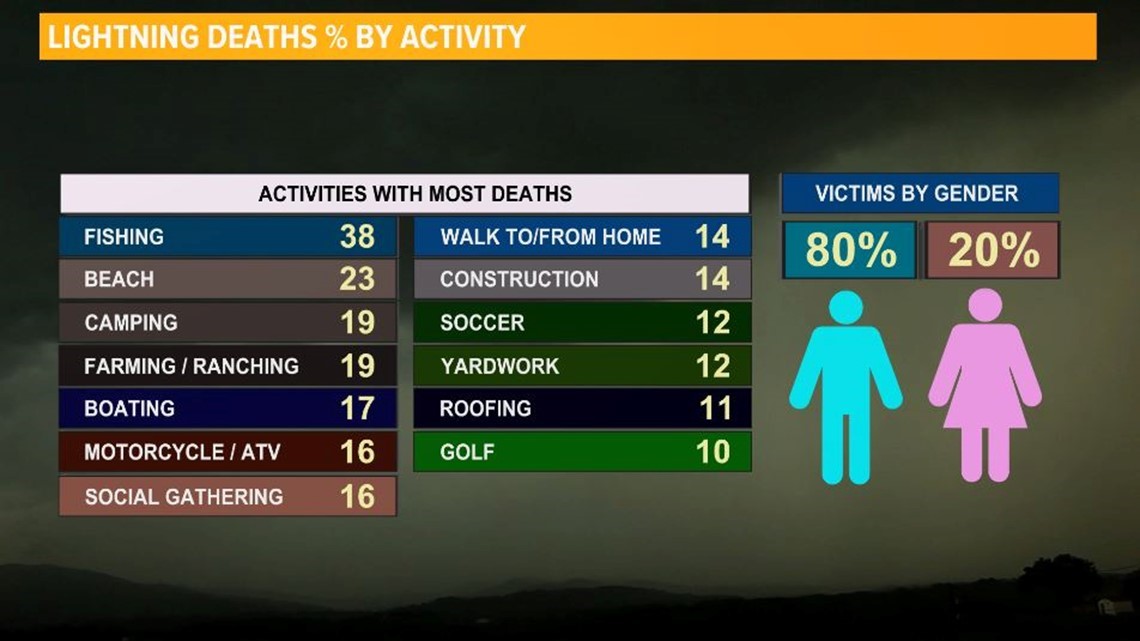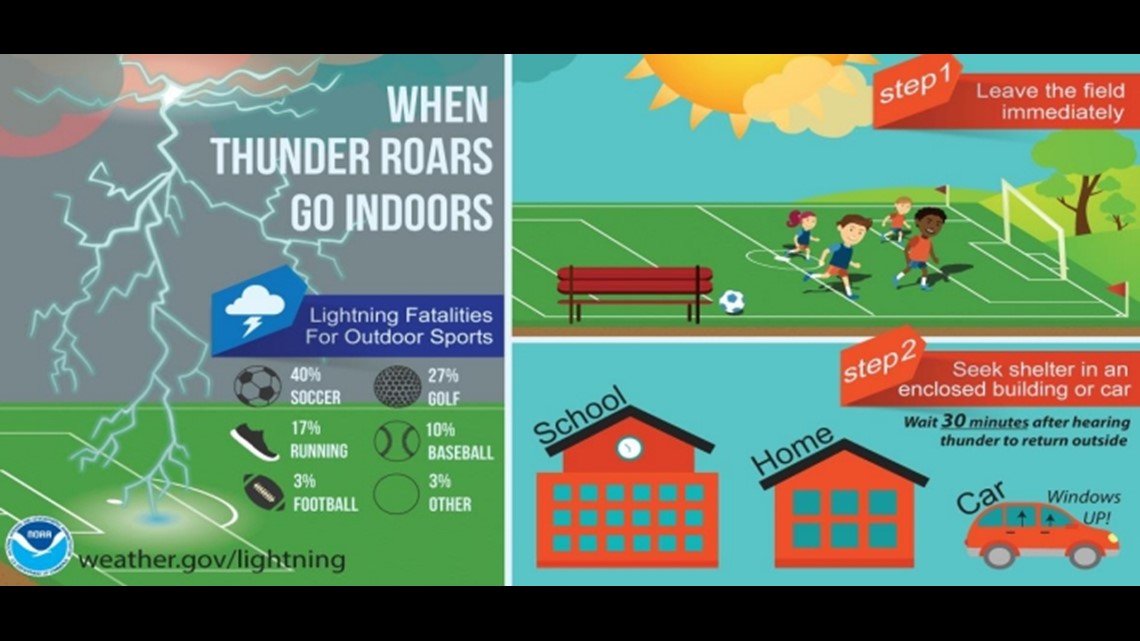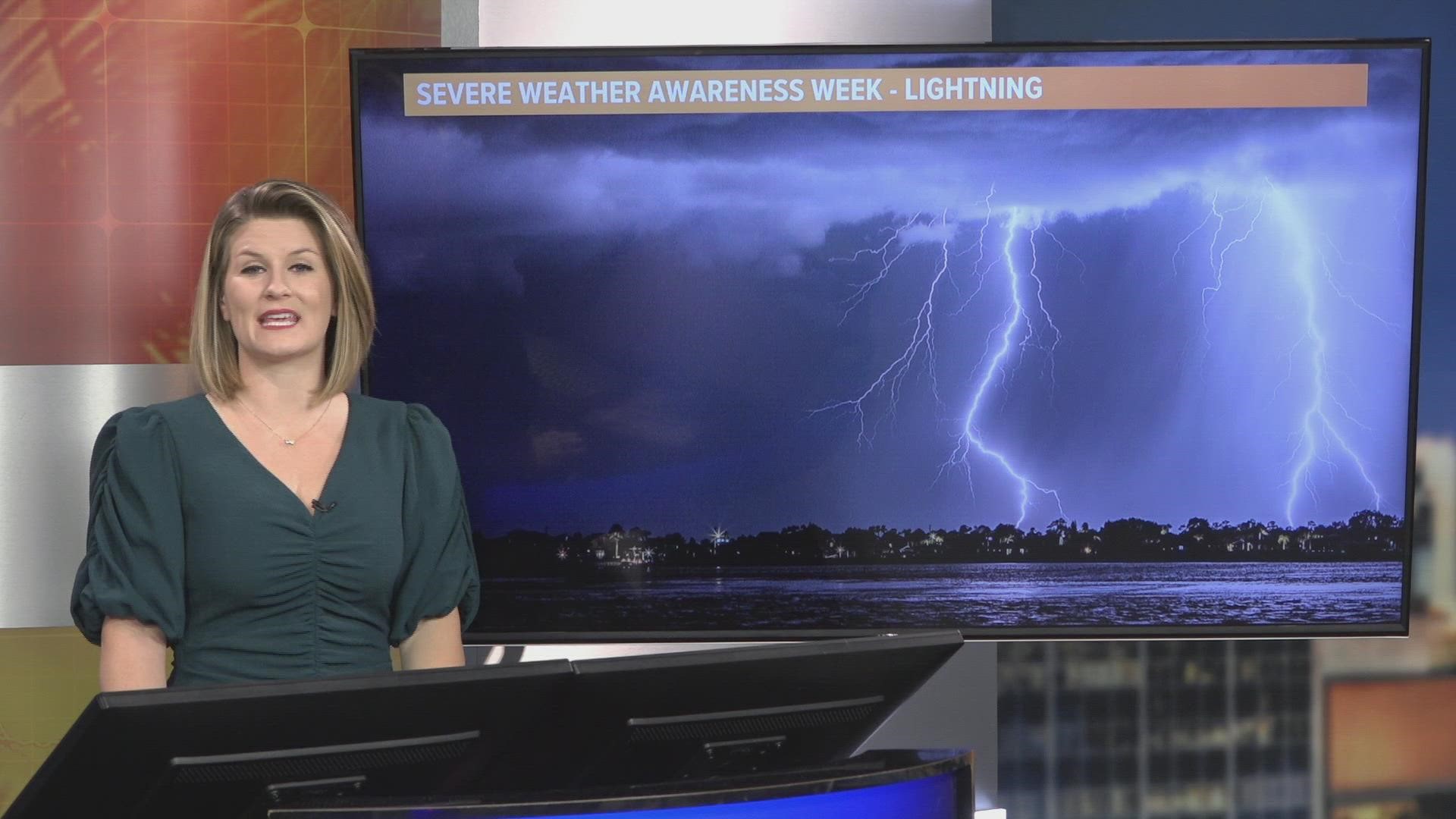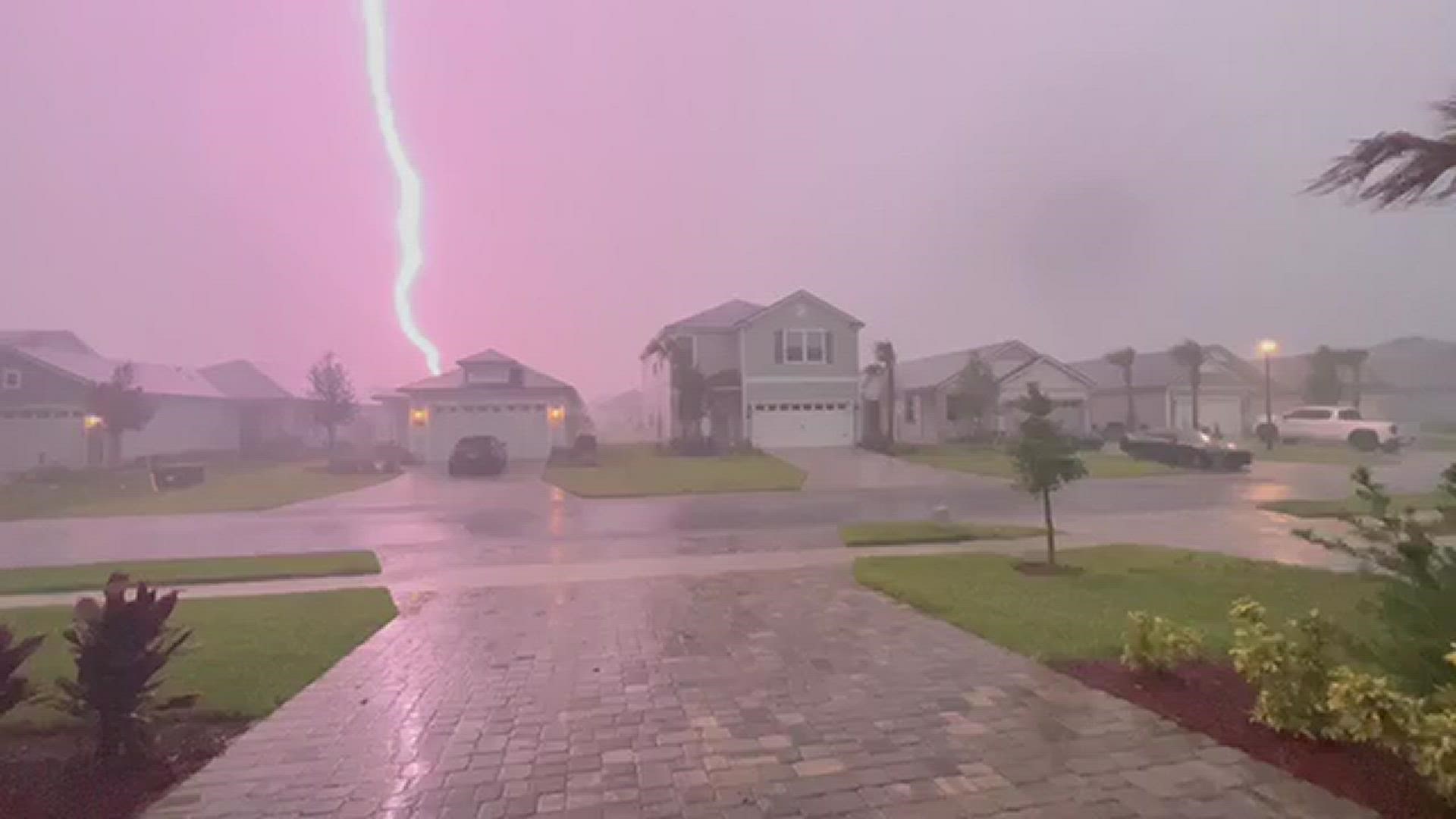JACKSONVILLE, Fla. — Florida's Severe Weather Awareness Week takes place from February 7th through the 11th. This is designed to educate Floridians on the various weather phenomena that we see in the state of Florida. It starts with the focus on lightning.
In Florida, the lightning capital of the United States, we may forget how dangerous and deadly it can be. Especially during the summer when it occurs on such a regular basis. On average, lighting kills 49 people each year in the United States and injures hundreds. In Florida, there can be up to 7 deaths per year due to lightning.
Of the top 15 counties with the most lightning strikes last year, 14 were in the state of Florida. This is why meteorologist always say the cliché term "when thunder roars, head indoors".
Did you know lightning strikes are becoming more common? Doctor Harold Brooks a Senior Research Scientist at NOAA's National Severe Storms Laboratory noted, "We expect lightning to increase as the planet warms. The number is 10% more lightning strikes for ever degree Celsius of warming."
Why is Florida the Lightning Capital of the USA?
It has a lot to do with the geography of Florida. It's warm and humid for most of the year, which helps provide more fuel for thunderstorms. But also the layout of Florida with sea breezes being common during the summer months creates additional triggers for thunderstorm development.
Why is Lightning Dangerous?
Most of us know lightning is dangerous, but when you look at the facts behind it you may realize its more dangerous than you think. Here are a few points:
- It can carry upwards of 100 million volts of electricity.
- Temperatures in a lightning strike can reach as high as 50,000 degrees Fahrenheit. That is hotter than the surface of the sun.
- Lightning can travel upwards of 60 feet away from the where it makes contact on the ground.
- It has the ability to travel over 10 miles away from it's parent storm cloud in a a phenomena called "a bolt from the blue."
- The most dangerous activity based on statistics to be doing outside during a storm is fishing. Last year, 38-percent of all lightning deaths resulted when people were fishing.


Thus, it's important to remember some basic lightning safety tips.


1) Don't ignore it: All to often do people wait until it starts to rain to head indoors. Remember if you can hear the thunder you can get hit by lightning.
2) Where to shelter? Standing next a large tree can be dangerous as that can act as a lightning rod attracting a lightning bolt. Standing in a open field away from objects as well can also be dangerous. The best plan of action is to head to your car or take shelter in a building.
3) Plan Ahead: Check the First Coast News App or take a look at the latest forecast ensure you are not heading out for a picnic in the middle of a storm.


